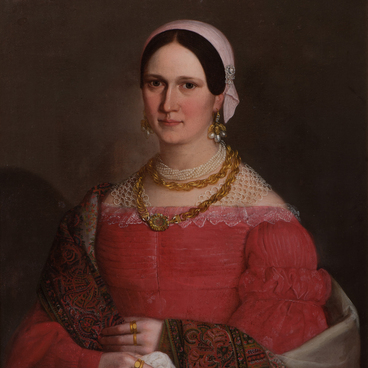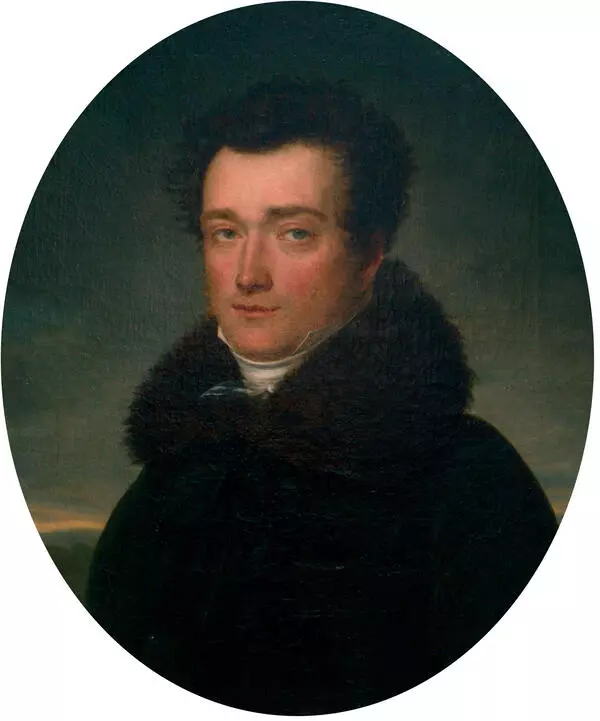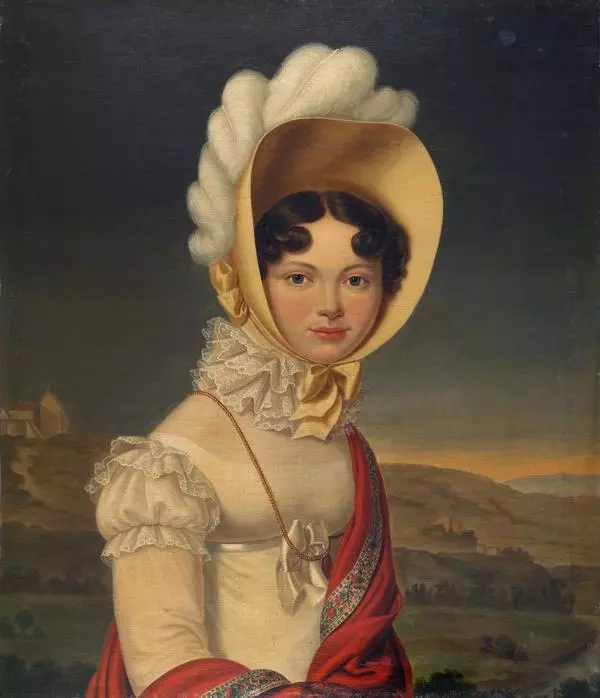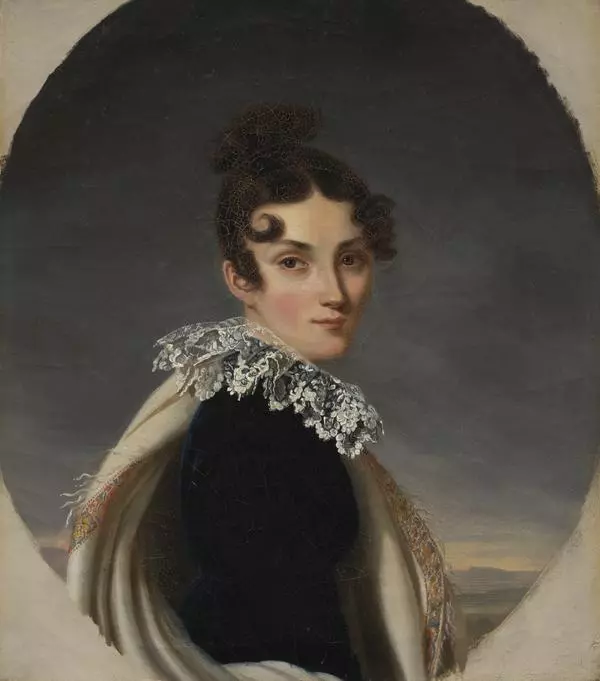Maria Vasilyevna Olsufyeva (1791-1863) was daughter of Major General Vasily Sergeevich Naryshkin and Anna Ivanovna, nee Vorontsova. Her first spouse was Major General Count Karl Antonovich de Balmen, who died quite young. Widowed in 1812, Maria Vasilyevna lived for several years in London with her uncle, the Russian ambassador, Count Semyon Romanovich Vorontsov. After that she got married again with Alexander Dmitrievich Olsufyev (1790-1853), the hero of the Patriotic War of 1812 and the Russian army’s foreign campaigns. It was also a second marriage for him.
Olsufieva’s portrait was created by the French artist Henri-François Rieseneur in 1820-1821, when Maria Vasilyevna was living in Moscow. The works of the painter were highly appreciated by Stendhal, and he advised ‘those women who have more expressiveness in their faces than beauty to apply to him’ This quote can be attributed to the portrait of Maria Olsufyeva. Her small gray eyes, steep forehead, protruding chin show that the artist did not gloss the model, which did not become an obstacle in portraying her attractive.
The portraits of Maria Vasilyevna and Alexander Dmitrievich Olsufyev (also from the collection of the Zaraysk Kremlin) at first glance seem to be paired. They are the same size, have the same format, faces are turned to each other, tonality and colorful scale, soft and restrained, are also close. However, there are differences that make you doubt that they are intended as a pair. Usually, in paired portraits, the figures and faces were made in the same size, but in this case, the male portrait is larger. The assumption that the portraits could have been ordered as wedding or matrimonial ones is also refuted by external features. Alexander Dmitrievich Olsufyev posed for the artist in a dolman, and Maria Vasilyevna - in a dark purple widow’s attire without jewelry, and it would be more correct to call her image a portrait of Marie Balmain, since in 1820-1821 she was not yet Olsufyeva. Such an external similarity between the two portraits of the spouses can rather be attributed to the peculiarities of the style of Henri-François Rieseneur.
Portraits began to be considered as paired after they got to Olsufyev’s house. Maria Vasilyevna is depicted in a modest dark purple dress with white lace against the background of a twilight sky and a blurred landscape, which emphasizes the romantic style of the portrait, as well as the noticeable blush of the heroine.
Olsufieva’s portrait was created by the French artist Henri-François Rieseneur in 1820-1821, when Maria Vasilyevna was living in Moscow. The works of the painter were highly appreciated by Stendhal, and he advised ‘those women who have more expressiveness in their faces than beauty to apply to him’ This quote can be attributed to the portrait of Maria Olsufyeva. Her small gray eyes, steep forehead, protruding chin show that the artist did not gloss the model, which did not become an obstacle in portraying her attractive.
The portraits of Maria Vasilyevna and Alexander Dmitrievich Olsufyev (also from the collection of the Zaraysk Kremlin) at first glance seem to be paired. They are the same size, have the same format, faces are turned to each other, tonality and colorful scale, soft and restrained, are also close. However, there are differences that make you doubt that they are intended as a pair. Usually, in paired portraits, the figures and faces were made in the same size, but in this case, the male portrait is larger. The assumption that the portraits could have been ordered as wedding or matrimonial ones is also refuted by external features. Alexander Dmitrievich Olsufyev posed for the artist in a dolman, and Maria Vasilyevna - in a dark purple widow’s attire without jewelry, and it would be more correct to call her image a portrait of Marie Balmain, since in 1820-1821 she was not yet Olsufyeva. Such an external similarity between the two portraits of the spouses can rather be attributed to the peculiarities of the style of Henri-François Rieseneur.
Portraits began to be considered as paired after they got to Olsufyev’s house. Maria Vasilyevna is depicted in a modest dark purple dress with white lace against the background of a twilight sky and a blurred landscape, which emphasizes the romantic style of the portrait, as well as the noticeable blush of the heroine.







